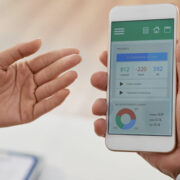How to Handle a Patient’s Insurance Information Securely

The Internet of Things has made healthcare more accessible, affordable, and convenient for patients and providers alike. It’s also helped to ensure health and safety during the coronavirus pandemic. However, telehealth appointments and electronic records don’t come without their fair share of risks.

Criminal attacks and security breaches within the healthcare industry have skyrocketed within the past decade. Patients want assurance that their data is safe, which is why it’s so essential to handle insurance information securely.
Educate Staff
Many people fear automated intelligence and its role in securing and organizing patient information. However, it’s people that pose the greatest security risk. Simple human error, negligence, and misconduct can result in dangerous and expensive consequences like data breaches and erasures. Ongoing security awareness and anti-phishing training are essential to minimize these incidents and protect sensitive information.
Restrict Access
Health care providers must also implement a range of protective mechanisms to make data access more difficult for hackers and workers. Install a firewall to prevent unauthorized individuals from accessing your network and retrieving information. Privacy controls that require multiple types of user authentication can also ensure only authorized professionals can view patient information. Use passwords, physical keys, or even biometrics to screen users, verify identification and heighten security.
Implement Usage Controls
Additionally, providers should monitor who accesses data and keep a detailed record of when and where they use the network. Implementing usage controls will discourage and anticipate risky or malicious activity that could compromise patients’ personal security. You can also use these controls to block web uploads, unauthorized email sends, or print sensitive information. This way, the information stays within your network and doesn’t end up in the wrong hands.
Encrypt Data
There were more than 3,705 healthcare data breaches between 2009 and 2020, which means more than 81% of the U.S. population has been affected. Unfortunately, more incidents occur every year, resulting in the loss, theft, exposure, and impermissible disclosure of millions of health records. That’s why it’s so important to encrypt data. Make it more difficult – or impossible – for attackers to decipher patient information with this one simple precaution. They won’t be able to read details, even if they gain access.
Secure Mobile Devices
Many patients enjoy the benefits of talking to their doctors through mobile devices like phones and tablets instead of driving to a doctor’s office. However, sharing information virtually always increases the risk of an attack or data breach, so health care providers must take precautions. Secure mobile devices by enforcing the use of strong passwords and encrypting application data. It’s also vital to have users install mobile security software before accessing personal information or attending virtual appointments.
Conduct Backups
Cyberattacks, natural disasters, and other calamities can compromise data availability, making it impossible for you and your patients to access. Sometimes, these incidents can even encrypt or completely erase information, which doesn’t bode well for anyone. That’s why frequent backups are so critical. Store data off-site so if someone or something compromises your network, you still have accessible information elsewhere. You can also enable remote deletion of data stored on mobile devices in case of theft or a similar emergency.
Scan for Vulnerabilities
Security loopholes and vulnerabilities in wireless networks offer an easy entry point for hackers. Therefore, it’s essential to conduct regular risk assessments to predict and identify potential threats. The 1996 Health Insurance Portability and Accountability Act made it mandatory for healthcare entities to routinely analyze their risks as part of their regular processes. This stipulation ensures that health care providers take proactive and preventive measures to maintain continuous, reasonable, and appropriate security protections for patients.
Take a Multifaceted Approach
The best practices for cybersecurity involve a multifaceted, sophisticated approach. Monitor, log, authenticate and back up data regularly. Educate staff and patients to maximize security measures and reassure users. If you do all the above and take preventive action, you can mitigate breaches and keep more clients’ information safe.
On the other hand, hospitals and health systems are also protecting patient information using various methods. Many forward-thinking healthcare providers are utilizing RightPatient, a touchless biometric patient identification platform that locks medical records with patient photos. Patients only need to look at the camera for registration and, during subsequent visits, verification – RightPatient does the rest. When fraudsters attempt to pass off as the patients, RightPatient red-flags them during the verification process, preventing medical identity theft and protecting patient information even if there is a data breach.









Leave a Reply
Want to join the discussion?Feel free to contribute!